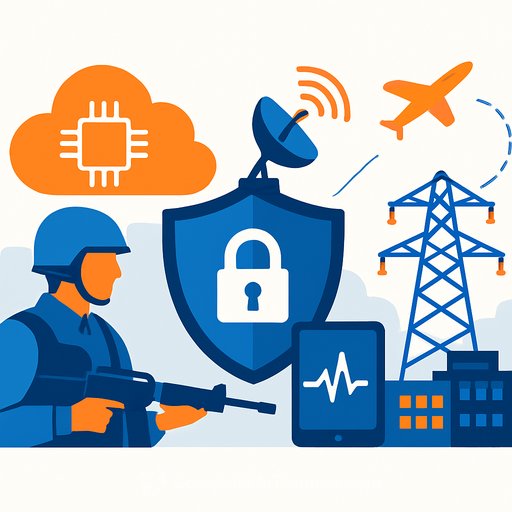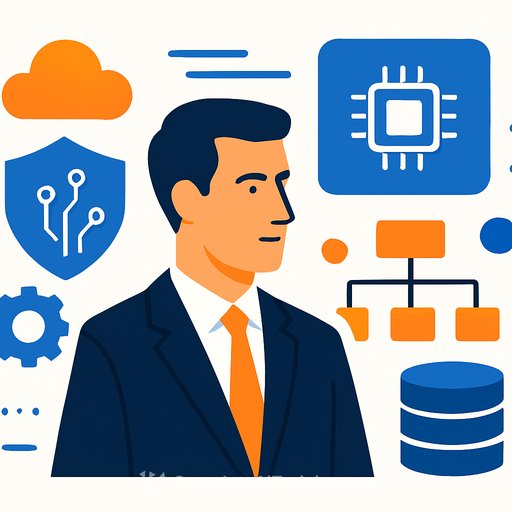Edge AI: A force multiplier for cyber-resilient operations
Edge AI is moving decision-making closer to where signals originate and where incidents unfold. For operations teams, that means faster detection, fewer single points of failure, and the ability to sustain critical functions when networks are contested or offline.
On the battlefield, forward units use local inference to process signals and keep missions running even if communications are jammed. In civilian settings, electric and water utilities can keep essential services stable by acting locally while central networks are degraded or compromised.
The threat picture ops leaders must plan for
State-backed actors have burrowed into U.S. utilities, water systems, and transportation networks, maintaining long-term access as staging for disruption. In 2024, officials disclosed that the Chinese state-sponsored group "Volt Typhoon" pivoted from IT networks into OT, then persisted by "living off the land."
Attackers exploit external links introduced for remote monitoring, vendor maintenance, and cloud oversight. Efficiency gains are real, but they also widen exposure and make lateral movement into physical process control more likely.
CISA's joint advisory on Volt Typhoon details the tradecraft operations teams should expect.
Digital twins + edge AI: a practical pairing
A digital twin mirrors a physical system using live sensor data, establishes baselines for normal behavior, and helps teams test failure scenarios. It exposes weak points whose protection prevents the widest disruption.
Edge AI complements twins by filtering and enriching sensor feeds before they hit the model. You get timely local context without saturating bandwidth, and the ability to act on-site when upstream networks are degraded.
Where it's working today
Energy operators are using edge devices to coordinate distributed resources like solar and batteries, running local optimization instead of routing every decision to the cloud. That speed is essential for balancing supply, demand, and intermittent generation.
Water plants deploy edge controllers that watch flow, pressure, and quality, flagging anomalies sooner than central systems alone. Catching small faults near the source prevents service outages and contamination events.
Operate through disruption with a hybrid model
Centralized systems still matter for planning, analytics, and oversight. Edge AI adds a resilience layer so facilities can maintain minimum service levels, trip to a safe state, and recover more quickly when networks are compromised.
As one expert noted, "By running inference directly on-site, facilities can make certain safety decisions without relying on central servers or cloud connections." In a crisis, field devices functioning as independent islands can be the difference between a contained incident and a cascading failure.
Execution playbook for operations leaders
- Prioritize decisive use cases. Protective trips at substations, valve and pressure stabilization at water plants, and local anomaly screening for high-volume sensors.
- Architect hybrid from day one. Clear separation of IT and OT, zero-trust access, data minimization at the edge, and signed models with secure boot on devices.
- MLOps for the edge. Maintain a model registry, versioned configs, staged rollouts with fast rollback, telemetry for drift detection, and offline-safe defaults.
- Integrate the digital twin. Normalize schemas and time-sync, route summarized edge features to the twin, and cache scenarios for offline rehearsal.
- Safety guardrails. Define local autonomy limits, fail-safe setpoints, human-in-the-loop checkpoints, and immutable audit logs for every autonomous action.
- Cyber hardening. Network allowlisting, MFA for maintenance access, hardware roots of trust, encrypted storage, and key rotation tied to tamper events.
- Incident drills. Runbooks for comms loss, degraded modes, battery-backed controllers, manual overrides, and red-team simulations that include OT.
- Governance and ethics. Approval matrix for autonomous actions, pre-deployment hazard analysis, bias checks on datasets, and clear accountability for outcomes.
- Upskill your workforce. Train operators on edge inference behavior, model drift symptoms, and failover procedures; rehearse quarterly with cross-functional teams. Consider structured learning paths for ops-focused AI deployment via courses by job role.
Metrics that keep you honest
- Detection latency at the edge vs. central systems
- False-positive/negative rates on safety-critical alerts
- Time operating safely while isolated from central networks
- Model drift rate and time to retrain/roll back
- Patch and model update SLA adherence across edge fleet
- Coverage: percentage of critical assets with local autonomy
Policy and resourcing gaps to watch
Clear deployment frameworks are still emerging, especially in defense. Ethical and accountability questions around autonomous warfighting must be confronted early to avoid brittle systems and unclear responsibility.
Agencies like CISA have outlined how AI intersects with critical infrastructure security, yet staffing and budget constraints strain execution. Track evolving guidance such as the CISA AI Roadmap and align your governance to it.
Bottom line for operations
The edge is where resilience is built and where restraint must be enforced. Invest in a hybrid architecture, give the edge clear guardrails, and measure performance with metrics that reflect safety, uptime, and speed to respond.
Ignore the edge, and you'll implement AI on fragile foundations.
Your membership also unlocks:






